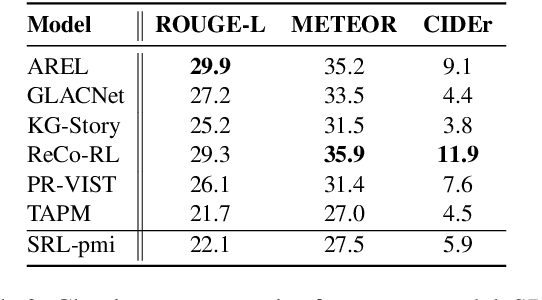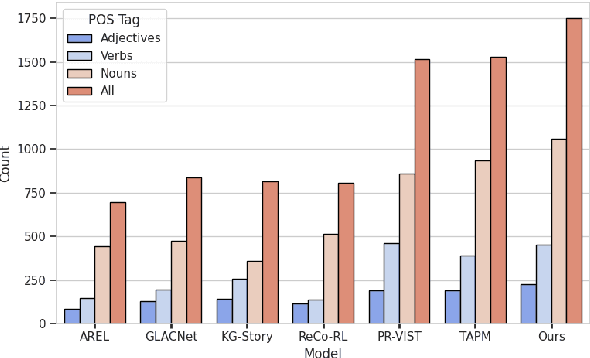SCO-VIST: Social Interaction Commonsense Knowledge-based Visual Storytelling
Paper and Code
Feb 01, 2024



Visual storytelling aims to automatically generate a coherent story based on a given image sequence. Unlike tasks like image captioning, visual stories should contain factual descriptions, worldviews, and human social commonsense to put disjointed elements together to form a coherent and engaging human-writeable story. However, most models mainly focus on applying factual information and using taxonomic/lexical external knowledge when attempting to create stories. This paper introduces SCO-VIST, a framework representing the image sequence as a graph with objects and relations that includes human action motivation and its social interaction commonsense knowledge. SCO-VIST then takes this graph representing plot points and creates bridges between plot points with semantic and occurrence-based edge weights. This weighted story graph produces the storyline in a sequence of events using Floyd-Warshall's algorithm. Our proposed framework produces stories superior across multiple metrics in terms of visual grounding, coherence, diversity, and humanness, per both automatic and human evaluations.
 Add to Chrome
Add to Chrome Add to Firefox
Add to Firefox Add to Edge
Add to Edge